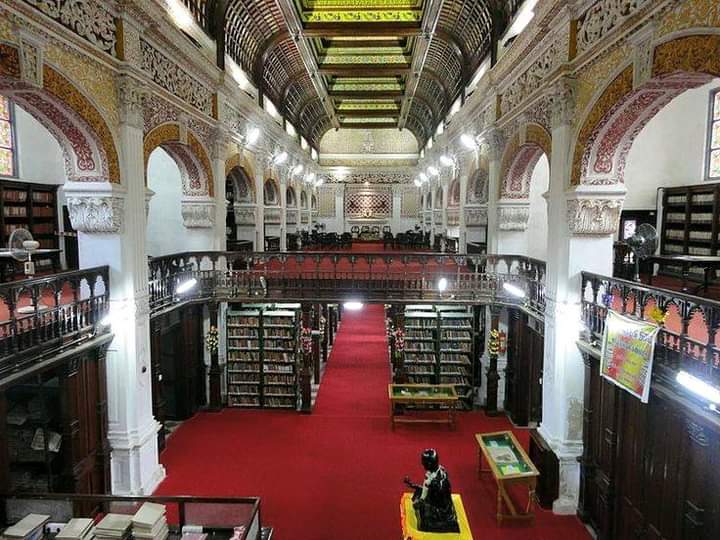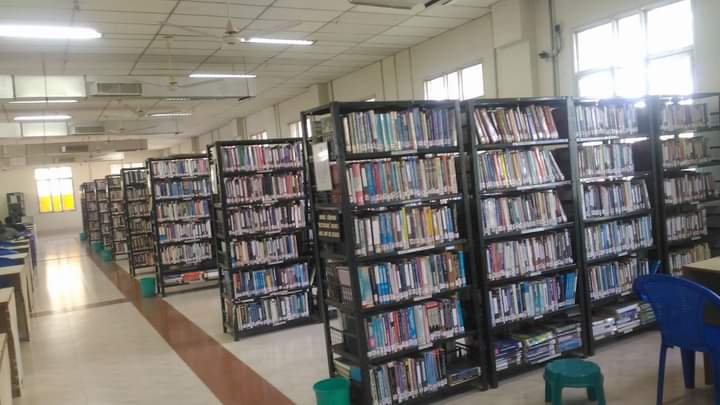
As Connemara Library turns 125, it’s time to take some lessons from the past

In all populous places a free public library is a very great boon, and I am quite sure that where a great number of students and educated natives of India have not got the means of providing themselves with the books that one needed for their study, in their business, a want of this kind is very deeply felt. I trust that this want will be supplied by the free public library of the building of which I am now going to lay the foundation stone.
These are the words said by Lord Robert Bourke Connemara, the Governor of Madras (between 1886 and 1890) after whom the famous Connemara Public Library was christened, while laying its foundation stone on March 22, 1890.
One of the landmark locations of 381-year-old Chennai, the library synonymous with the intellectual identity of the city, turned 125 this December 5.
True to what Lord Connemara said, the library since its inception has indeed proved a boon for the general public, while also paving the way for more public libraries in the state.
Related news: Library with a difference: How conversations help foster positivity
Despite struggling with vacant posts and reduced funds, the library continues to almost 45 per cent of the library services in Chennai. The city has nearly 150 branches of the library and Connemara’s membership stands more or less equal to the total membership of all the libraries put together. It has also more than 6 lakh individual titles.
The library, its rise to popularity and subsequent decline, have had an impact on the birth, growth and downfall of public libraries in the state.
From department to directorate
Avudaiappan Natarajan, a former director of the library says the 19th century edifice, designed by Henry Irwin in the Indo-Saracenic style of architecture was constructed at a budget of ₹5 lakh over a span of six years. The library, officially opened in December 5, 1896 was named in memory of Lord Connemara.
Natarajan divides the evolution of the library into three periods – from 1896 to 1929, from 1930 to 1948 and from 1948 to the present day.
“The library was part of the Madras Museum till 1929 whose British curators doubled up as librarians,” said Natarajan.
Edgar Thurston, the then Superintendent of the museum and author of ‘Castes and Tribes of South India’ served as the first librarian of Connemara.
The library got its first Indian librarian – R Janardhanam – in 1929. Until then, the books were not on display and were kept in closed cupboards. Those desiring to access these books were required to name the title and the librarian would get it for them. It was during Janardhanam’s period that the books began to be kept in open racks and readers were allowed to browse through them.

“The library of the University of Madras also functioned in the same building till 1928. SR Ranganathan, considered the ‘father of Indian library science’ served as the chief of that library. In the second period, the library functioned as separate department.”
In 1948, under the Madras Public Library Act (later renamed as Tamil Nadu Public Library Act), Connemara was given the status of a State Central Library while the library department was upgraded to the Directorate of Public Libraries. It is interesting to note that Tamil Nadu was the first state in the country to come up with such a legislation.
Introducing state to more reading
To implement the Act, Janardhanam was appointed as a special officer and became instrumental in opening libraries across the state, starting from the 1950s.
“Today we have nearly 4,000 public libraries in the state,” added Natarajan.
In 1962, the first professional librarian named V Thillainayagam, who worked in Connemara Library, became its first chief. In 1972, he became the first director of Directorate of Public Libraries. Till his arrival, the district libraries were looked after by District Education Officers (DEO).
Natarajan says the district libraries suffered during this period as the DEOs were not well-trained in library science. It was during Thillainayagam’s period that the dedicated posts of District Library Officers were created.
“Until then, the Local Library Administration (LLA) Committee at the district level was responsible for purchasing the books. Because of this, a book found in one district would not be found in other district. If a publisher wants his book to be purchased, he must approach the particular LLA committees in each districts. There was also no transparency in price fixation by the committee. Thillainayagam changed this tradition and centralised the purchase of books and fixed government price for the same,” Natarajan added.
In 1994, during the directorship of Natarajan, the civil service study circle was introduced in Connemara Library and later extended to all district libraries in the state.
Eventual downfall and struggle
However, both Connemara and district libraries suffered a downfall when Thillainayagam retired in 1982.
The libraries again came under the purview of School Education Department officials. While it has been years since the Connemara Library had a full-time director, the library has many vacancies awaiting to be filled up and has been deprived of its usual allocation of funds.
“Of the 140 posts in Connemara Library, 80 are vacant for several years. Earlier, the library used to publish a bibliography, containing the details of books it has acquires every year, but that too has been stopped. Though library authorities claim the same is being published on its website, it is not updated regularly. These are the ready reckoners for a researcher,” said library researcher Ariaravelan.
A dedicated budget was kept aside for libraries when they were under the purview of a separate department during the British period. After Independence or 1950s onwards, while 10 cent of housing cess went towards the maintenance of libraries, the government an equal amount for the same.
“So, if a library received ₹10 lakh through housing cess, the government would contribute another ₹10 lakh to the corpus. In 1981, library staff were made government service holders. The government’s share of contribution was paid in the form of salaries to these personnel while the money received from housing cess was utilised for the maintenance of libraries. But for the past many years, the 10 per cent of housing cess has not been shared with the libraries, leading to their poor maintenance. Only if public libraries are again made into a separate department, these libraries can be revamped,” Ariaravelan added.
Ariaravelan insists to revamp the library culture in the state, the government should open a library for every 50,000 population.
“For every 50,000 population in a region, there must be a library. When TASMAC shops are operating in rented buildings and earning profits, why can’t the government allow the public libraries to run in rented buildings or construct its own building? Also, the vacancies in rural libraries have not been filled. For this reason, the same staff in many areas have to man one library in the morning and another in the neighbouring area in the evening,” he added.
Related news: New York Times’ 100 notable books features 3 Indian writers this year
While libraries operated in rented buildings earlier, during Thillainayagam’s period, all the district libraries started operating in their own buildings. Later, in order to open new libraries the government said that the local bodies must give land.
Being one of the four National Depository Libraries, Connemara Library used to get a copy of books and periodicals published anywhere in the country. But for the past few years, the library is not getting such copies.
“This is because of lack of understanding and communication between the other three libraries located in Delhi, Kolkata and Mumbai,” says Ariaravelan, while Natarajan says the Delhi-based publishers are not showing an interest to send copies to Connemara because they think Tamil Nadu is not a state of English readership.
According to Natarajan, the government must open special libraries for women and children. Agreeing to his view, Ariaravelan said that the government need not to worry about the budget because the funds can be received from Raja Rammohun Roy Library Foundation.

